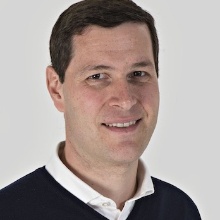We are pleased to announce that Marco Discacciati, senior lecturer in Applied Mathematics at the Loughborough University (UK), will give the SFB 1313 "Pretty Porous Science Lecture" #44. His talk will be on "Modelling filtration through porous media: from domain decomposition towards digital twins".
Date: Thursday, 14 September 2023
Time: 4:00 pm CET
Speaker: Dr. Marco Discacciati, Loughborough University (UK)
Lecture title: "Modelling filtration through porous media: from domain decomposition towards digital twins"
Place: Multi Media Lab (MML), U1.003, Pfaffenwaldring 61, 70569 Stuttgart, Campus Vaihingen. If you are interested in participating in the lecture, please contact melanie.lipp@iws.uni-stuttgart.de
Abstract
Filtration through porous media is an important process occurring in geophysics and biology as well as in many engineering applications involving filters and membranes.
The computational modelling of this process is challenging due to its multi-physics nature. Indeed, mathematical and numerical models must accurately represent both the free-fluid and the porous-medium flow regimes as well as the transitional regime between them. Moreover, in the context of industrial applications, effective algorithms are needed to provide reliable results in real time as practitioners rely more and more on computer simulations to assess and optimize the performance of their filtration systems to avoid expensive and time-consuming laboratory work. In this talk, I will present possible coupling concepts between free flows and porous-media flows, and I will discuss how they can be used to set up efficient numerical algorithms based on domain decomposition theory. Moreover, I will show how these methods can be combined with model-order-reduction techniques to obtain an online/offline computational paradigm with the aim of developing digital twins to deliver accurate numerical models in real time.


